Natural Health Solutions
- The Well (Home Page)
- Water Cures Blog
- How To Do Water Cures
- What is Water Cures?
- Electrolytes & Salt
- Drinking Water
- Hire a Hydration Coach
- Acid Reflux
- Addiction Treatment
- Allergy Relief
- Blood
- Bones and Joints
- BP / Heart / Vascular
- Brain / Head / Mental
- Cancer
- Chronic Fatigue
- Cramps No More
- Dehydration
- Edema
- Fibromyalgia
- HIV / AIDS
- Immune System
- Lungs / Respiratory / Cough
- Lupus
- Lyme Disease
- Multiple Sclerosis
- Pain
- Skin Care
- Urinary Tract Infection
- Womens Health
- Water & Weight Loss
- Student Grades
- Survivalist Health Care
- Pet Water Cures
- Hydration Coach
- Testimonials
- My Water Cures
- FAQ
- In The News
- Volunteer
- About / Contact
- Red Light Therapy
- Live Blood Microscopy
Symptoms of Lyme Disease
When considering the symptoms of Lyme disease, it should be noted that half of those infected with Lyme will never get the erythema migraines or bulls-eye rash. While this statement doesn't have a basis research, if 300,000 people annually are infected, there would be a sizable number of people with the rash and there would be a greater awareness of Lyme disease symptoms.
Also many may have the rash but it may appear on areas of the body where it goes unnoticed.
First Symptoms of Lyme Disease
Generalized weakness and fatigue, chills, fever, headache, muscle and joint aches, swollen lymph nodes. However, some of those infected have no symptoms at all.
General muscle weakness
Anemia (most often hemolytic anemia from a Babesia co-infection)
Really bad headaches and stiff neck (meningitis)
Arthritic pain
Joint pain / swelling (often severe), especially in the knees and other large joints (when this hits, you will think you need to go to the hospital it will be so bad).
Bell's Palsey Facial droop on one or both sides of the face due to loss of muscle tone.
Tendon, muscle, joint bone pain that comes and goes.
Irregular heart beats or palpitations (called Lyme carditis).
Afib or atrial fibrillation
Dizziness
Short of breath
Nerve Pain
Numbness, tingling in the hands and or feet.
Coldness in the hands and feet.
Short-term memory loss
Brain fog
Lack of drive / mental focus on tasks
Depression
Symptoms of Chronic Infection:
Months to Years After a Tick Bite
Transient arthritis pains regardless of the weather or barometric pressure
Severe joint pain and swelling
Intermittent pain in hands and feet
Pains in what would be described as the area of the liver
Intermittent pain as if in one or both kidneys, possibly moving from one side to the other
Chronic Lyme Disease Symptoms?
Overall body weakness
Poor stamina
Fatigue, tiredness, generalized weakness
Headache, neck stiffness (meningitis).
Dizziness
Vision problems, possibly changing daily
Day sweats for no reason and on certain unusual parts of the body
Night sweats
Chills
Rib soreness
Hair loss (unexplained)
Shooting pains
Nerves rapid firing / like electric shock or a TENS machine is attached to your skin.
Burning or stabbing sensations
Sort throat, swollen glands
Upset stomach / abdominal pain
Unexplained weight loss / weight gain from bugs in the blood
Inability to lose the excess weight recently
Unavoidable need to sit or lay down and rest
Shortness of breath
Cough that won't go away (with Babesiosis)
Shortness of breath with minimal exertion
Intermittent pain in hands and feet
Change in bowel function: loose stool or frequent liquid stool
Bladder dysfunction, irritable bowel
Testicular pain, pelvic pain
Pains in what would be considered the area of the liver
Intermittent kidney pain, in one or both or may migrate from side to side
Pain migrating within the body or organs. (pain will start at one point and over minutes or more, Migrate to another point as if the pain was crawling from one place to another)
Good days and Bad Days (without change in diet, treatment or routine, some days will be good and some bad)
Women may experience more intense symptoms right before, during or after their minstrel cycle. Antibiotics taken for another ailment may make you feel better and then symptoms will get worse once completed. You may feel worse on antibiotics (called a Jarish-Herxheimer reaction, killed Lyme bacteria release toxins that temporarily worsen the underlying symptoms.
Mental Health Lyme Disease Symptoms
Forgetfulness
Poor short term memory that may come and go
Loss of short-term memory
Brain fog
Lack of drive
Depression
Dizziness
Light and sound sensitivity
Low motivation for the activities of daily living
Trouble sleeping (getting as little as 2 to 3 hours sleep at night)
Foggy thinking and memory loss
Memory and concentration problems
difficulty falling asleep and staying asleep
Disturbed sleep
Too much or too little sleep
Frequent or early waking
Sleeping for as little as 3 or 4 hours a night
Disorientation, getting lost or going to the wrong places
Balance problems
Headaches
Nerve Pain
Skin Hypersensitivity
Facial paralysis (Bell's Palsy)
Twitching of the face or other muscles
Numbness and or tingling in the hands and or feet that comes and goes.
Numbness and burning sensation>/br>
Coldness in the hands and feet that comes and goes.
Electrical sensations, often in lower extremities
Night sweats (with no signs of TB)
Balance and walking problems (this is both a neurological and a muscle problem)
Arthritis pain
Arthritis pains that come and go regardless of the weather or barometric pressure
Vision problems
Stiff neck
Neck creaks and cracks with movement
Stiffness of joints and back
Fatigue
Muscle pains or cramps
Increasing but mild problems with balance
Severe joint pain and swelling, especially in the knees and other large joints.
Joint pains in large and small joints.
Facial droop on one or both sides due to loss of muscle tone (called Bell's palsy).
Pain in the tendons, muscles, joints and bones that comes and goes.
Joint pain that moves from one joint to another in minutes
Anemia
Irregular shaped red blood cells
Rouleau formation of red blood cells
Early signs of DIC (Disseminated intravascular coagulation)
Signs of myeloproliferative disease
Irregular heart beats or palpitations (called Lyme carditis).
Feet and or leg edema
Idiopathic cardiomyopathy
Chest pain
Death by heart attack
Many heart disease patients may in reality be suffering from Lyme and never be diagnosed. This because Lyme disease can escape detection and or be easily misdiagnosed.
If you have heart disease symptoms and live in areas where Lyme is known to infect people, please get checked out for Lyme.
These heart conditions are called Lyme “carditis.”
chest pain with palpation's
atrial fibrillation
cardiac failure
cardiomegaly
cardiomyopathy
chest pain
exertional dyspnea
irregular heartbeat (arrhythmia)
myocarditis, palpitations
pancarditis
pericarditis
syncope
tachycardia
blockages in the atria and ventricle electric conduction of the heart.
Heart blockages because of Lyme often require pacemakers or may lead to sudden cardiac death
Heart symptoms your doctor cannot explain
Both mental and emotional (psychiatric) abnormalities (it is estimated that up to 50 % experience psychiatric problems)
Behavioral disorders (including impulsive acts of aggression and violence)
Bipolar disorder (manic depression)
Chronic depression
Dementia
Anxiety
Eating disorders
Hallucinations
Mood swings
Panic attacks
Paranoia
Schizophrenia
Suicidal depression
Foggy thinking
Memory loss
Joint pains
Light and sound sensitivity
Bizarre, shifting, and even excruciating nerve pains
Unexplained breast pain and or milk production
There will be more "symptoms Lyme disease" added as the knowledge grows.
Recent Articles
-
Dark Screen Microscopy: What it is, does and what it can tell you.
Jul 07, 19 05:23 PM
Dark Screen Microscopy allows for a BioNutritional Auditi to look at your blood in its whole, live state -
About Water Cures and how water can help improve your health and life
Oct 25, 18 09:38 PM
About water cures: information on the Water Cures Protocol, Dr. Batmanghelidj and the founder of this site, Bob Butts.. -
Water Cures Testimonials
Apr 16, 18 09:26 PM
Water cures testimonials of those who improved their health using the water cures protocol.
October 22, 2018...
Robert Butts, founder of WaterCures.org passed away at the age of 83. He will be missed.

 |
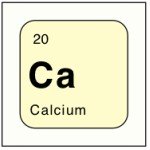 |
Warning: Research shows calcium supplements may be harmful to your health.
| Fixing Blood Disorders
Posted December 2016 |
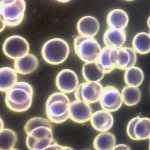 |
© 2016 Jonathan Steele
It is amazing how so many things that are new to us were common knowledge in the past. One basic practice of the Water Cures protocol is to drink at least 30-45 minutes before and 2 1/2 hours after a meal. This is not a new thought however. Notice what a magazine from 1925 had to say...
"Drink plenty of water two hours after each meal; drink none just before eating; and a small quantity if any at meal time. Do not take a bath until two hours after eating a meal, nor closer than one hour before eating. Drink a full glass of water both before and after the bath." (Golden Age, Sept. 9, 1925, pp. 784-785)
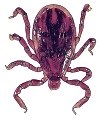 |
New in 2016
Cancer 1, Natural Cures 0
The War...is against...
Cancer Natural Cures
---------------------
| Hand Joint Pain: How Can I Make It Go Away? |
 |
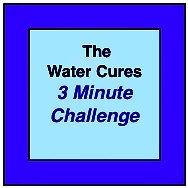 |
to try a no cost, scientifically proven way of improving your well being?
Click Here to try the 3 Minute Challenge
Find them right here!
 Shoulder Joint Pain Relief Shoulder Joint Pain Relief |
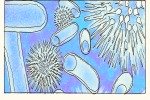 |
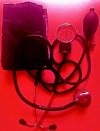 |
What Your Doctor's Not Telling You!
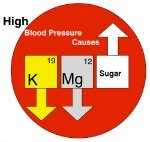 High Blood Pressure Causes High Blood Pressure Causes |
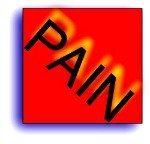 |
 |
We started expanding on the causes...
The weirdest...chimney sweep cancer. You won't believe where it strikes.
Our theory on...
Healthy Hydration for Athletics & the reason for hydration guideline failures in the past.
We speak to organizations small and large, private and corporate.
Our scientifically proven training works to improve performance and decrease lost days due to illness.
We are currently speaking to hospitals to train staff in ways to decrease the readmission rates in several disease processes that pose high risk of <30 day readmission.
We can cut the rates by up to 70%. Ask us how.
Nurse Jon for more information on hydrating to improve performance.
Here is the Science
We are not promoting increased salt intake. We are suggesting taking salt in amounts appropriate to your bodies needs, based on water needs. Our needs are not one size fits all.
Note: Do you have CHF or Kidney Disease? Then.....
THIS IS NOT FOR YOU.
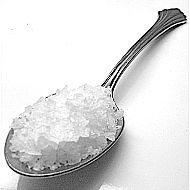 |
Read This Study
And Decide for Yourself
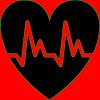 |
For Most of Us, No!
According to a JAMA study.
A Review of the above JAMA Article
Study: Salt May Not Be All Bad?
Listen to your body. Do not use this if you are under a doctors care. Do not stop taking medications without consulting your doctor. If you are on medications, consult your doctor if you start the Water Cures Protocol as it may change your needs.
 |
Click Here to Discover How
 |
Click Here
Sign Up for your biweekly newsletter.
 |
 |
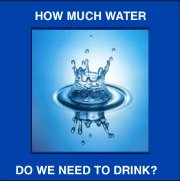 |
If you are looking for an affordable alternative natural health care for depression, consider the Water Cures protocol.
Like What You're Learning? Please share your likes on Facebook
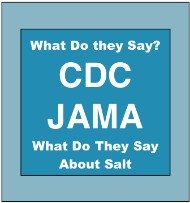 |
 |
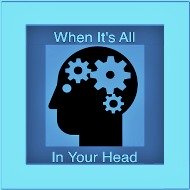 |
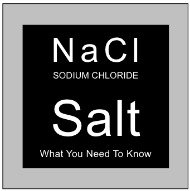 |
Hi, my name is Sharon. The webmaster of this site is my nurse, my personal water coach and my husband.
As this site was first being built, I had a headache and as usual took an Ibuprofen. Impatient for it to start working, I decided to try the Water Cures. I took a pinch of salt and a glass of water. Then I took a second pinch of salt and another glass of water. My headache was gone in less than 5 minutes.
From my personal experience, it usually takes 30 to 45 minutes for Ibuprofen to work. Some have found it takes ibuprofen 24 minutes to start working.
Yet on the Water Cures protocol, my headache was gone in 5 minutes.
Its simple: give your body what it needs and your body will give you what you need, the ability to feel great.
Water Cures was the solution for the elimination of my headache. It is what I will use from now on.
Why not give it a try yourself.
